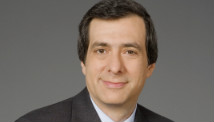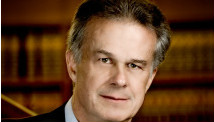STORY HIGHLIGHTS
- Howard Kurtz: The mainstream media are rooting for immigration policy changes
- Kurtz: Is enthusiasm causing the media to overestimate the prospects for reform?
- He says the Republican House has been a graveyard for numerous Obama reforms
- Kurtz: Illegal immigration still arouses visceral opposition among some Americans
Editor's note: Howard Kurtz is the host of CNN's "Reliable Sources" and is Newsweek's Washington bureau chief. He is also a contributor to the website Daily Download.
(CNN) -- The mainstream media -- you know who you are -- are rooting for immigration reform.
They like the idea of doing something to accommodate the country's 11 million undocumented immigrants, who, despite conservative rhetoric to the contrary, were never going to be banished.
They swoon over the kind of bipartisanship that brings together John McCain and Marco Rubio on the one hand and Barack Obama and Chuck Schumer on the other.

Howard Kurtz
They believe the Republican Party needs to moderate its harsh rhetoric about immigrants -- if only to salvage its political future -- and are welcoming the GOP's new realism.
But is that enthusiasm causing media organizations to overestimate the prospects for reform?
Watch: Steve Kroft Plays Defense Over Hillary/Obama Lovefest on '60 Minutes'
Any bill still must pass the Republican House, which has been a graveyard for numerous Obama reforms. The Senate has always been a place where top lawmakers reach across the aisle more easily than in the polarized House, as was evident during the fiscal cliff debacle. And there are conservative groups determined to derail any path toward citizenship, which they view as amnesty.
It's not that journalists are acting as cheerleaders for the emerging plan. But when the media have qualms about an issue, they couch it as being "controversial" and "risky" (say, George W. Bush's plan to privatize Social Security).
Opinion: Immigrant - Can we trust Obama?
By contrast, look at the way the president's immigration speech in Las Vegas was covered:
The New York Times: "Seizing on a groundswell of support for rewriting the nation's immigration laws ..."
The Washington Post: "Obama added to momentum on Capitol Hill in favor of an overhaul of the nation's immigration laws ..."
We saw the same supportive approach when the Pentagon lifted a ban on women serving in front-line combat positions, which, despite some conservative opposition, was greeted with favorable features that largely depicted the move as long overdue.
Watch: Should N.Y. Times Have Censored Company Name Over the S-Word?
As with many perpetual Beltway disputes, the contours of a common-sense compromise on immigration have been clear for some time. The right wants tougher border enforcement and employer verification procedures. The left wants undocumented immigrants taken out of the "shadows," as Obama put it, and given a chance to become openly productive members of society.
The key are the tradeoffs. How long would a path to citizenship take? Are fines and back taxes required? How do we ensure that those who broke the law don't get an unfair advantage over legal applicants?
I don't argue with the standard political analysis that the moment may be ripe for immigration reform.
Watch: Media Seize on Emotional Moment of Gabby Giffords' Testimony
Mitt Romney, who talked about wanting immigrants to "self-deport," got clobbered among Hispanic voters. The GOP has lost the popular vote in five of the past six presidential elections. Sean Hannity, the Fox News commentator, says he has "evolved" on the issue, and he's not alone.
The conservative media may be a bellwether here. After Obama's Tuesday speech, Hannity's leadoff guest was Karl Rove, the former Bush lieutenant who favors the Senate compromise. And when Rubio, the Florida senator and son of Cuban immigrants, called in to Rush Limbaugh's show, the host -- while criticizing Obama -- told him, "What you are doing is admirable and noteworthy. You are recognizing reality."
Watch: BlackBerry 10: Is It a Hit or All Thumbs?
But illegal immigration remains a divisive subject that still arouses visceral opposition among some Americans. Capitol Hill is a place where partisan maneuvering can push the government to the brink of default. And as George W. Bush learned in his second term, hammering out a compromise on such a volatile issue is maddeningly elusive.
Perhaps the election changed the landscape and both parties will find a way to compromise. In the meantime, it might be wise to take the upbeat media coverage with a healthy dose of skepticism.
Follow us on Twitter @CNNOpinion.
Join us on Facebook/CNNOpinion.
The opinions expressed in this commentary are solely those of Howard Kurtz.

